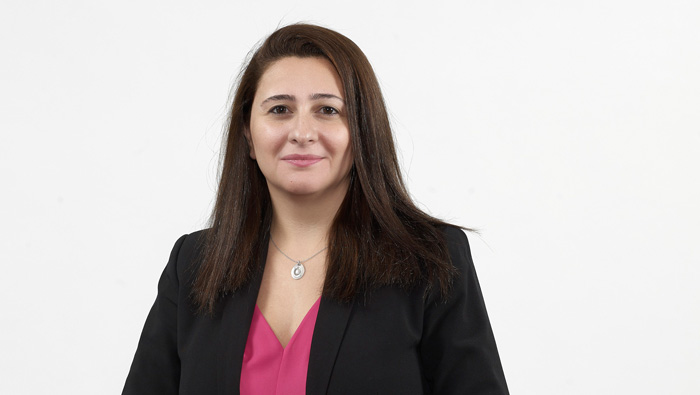
Muscat: According to a new study, 88 per cent of investors in the Middle East have exposure to China, versus 73 per cent for all investors globally. China’s attractiveness rating for sovereign investors has improved more than any other major region since 2017.
This was revealed in Invesco's Global Sovereign Asset Management Study which shows disenchantment with Europe among sovereign investors and increased interest in emerging markets, particularly China.
The unique competitive dynamics of China are appealing for sovereigns seeking more diversification, the survey found, with equities continuing to be the asset class most favoured.
This year’s study was conducted face-to-face amongst 139 individual sovereign investors and central bank reserve managers across the globe representing $20.3trillion of assets, of which 71 are central banks (62 in 2018), reflecting their growing status as sovereign investors.
Approximately 100 per cent of sovereigns in the Middle East with China exposure held Chinese equities, showing that the government’s measures to open the market to foreign investors are bearing fruit. Middle East respondents have focused on building their expertise in China by investing in partnerships, developing in-house proficiency and setting up dedicated Asian offices.
For sovereigns in the Middle East, investment risk is seen as the biggest challenge to investing in China. Transparency remains a significant obstacle to higher allocations in China for global sovereigns, while for those sovereigns with no existing allocation to China, investment restrictions and currency risk are seen as the main impediments.
Despite the fact that the study was carried out during a period of ongoing rhetoric on a trade war, those surveyed saw China’s pledge to improve safeguarding of intellectual property as grounds for optimism that some resolution of tensions would be reached.
Middle East investors are also increasing allocations to Asia as a region, with 75 per cent having increased allocations in 2018 compared with 47 per cent for all investors surveyed. Indications are that this trend will continue in 2019.
“We are observing an interesting shift in terms of both geographic and sector allocation from the Middle East. The need to balance global exposure is leading many of the regional investors to explore opportunities in emerging markets and Asia, especially due to the attractive emerging market fundamentals and valuations," Josette Rizk, Client Director, Institutional Sales, Invesco Middle East and Africa, said.
"Whilst increasing allocation to China remains on the radar for regional investors, investment risk is seen as the biggest challenge to investing in the country,” she added.
“Another interesting trend we have observed is that technology and innovation is becoming an important part of their overall portfolio. This is primarily driven by attractive returns that tech companies offer and is also aligned with the agendas of many of the regional governments, particularly of the UAE and Saudi Arabia, who want to ultimately develop a knowledge economy to drive economic development in their countries,” Josette Rizk said.
“Finally, the conversation around ESG or responsible investing has picked up momentum. Much of this has been driven by large institutional investors in the region, and in particular by the sovereign wealth funds, notably on core themes that have an impact on sustainability and the signing of the One Planet Initiative,” she added.
Europe
A combination of slowing economic growth and perceptions of rising political risk have led to a decline in the perceived attractiveness of major European economies. Brexit is now influencing asset allocation decisions for 64 per cent of all sovereigns, though this is higher in the region with 78 per cent. Continental Europe is seen as increasingly uncertain with the ascendance of populist movements in major European economies such as Germany and Italy, and is impacting asset allocation decisions for 46 per cent of all respondents.
This has resulted in Europe falling out of favour, with half of sovereign investors in the Middle East decreasing allocations to Europe in 2018 and a similar number planning further decreases in 2019. Only 13 per cent of global sovereigns plan on increasing allocations to Europe this year, compared to a 40 per cent allocation to Asia and 36 per cent to Emerging Markets.
Fixed income displaces equities as largest asset class for sovereigns, while Middle East investors allocate resources to infrastructure
2018 was a challenging year for sovereigns as weak and volatile equity markets led to a decline in overall investment returns. On average, sovereign investors achieved returns of 4 per cent in 2018 compared to 9 per cent in 2017. Despite the decrease in returns, sovereigns performed well given negative returns from global equities, which fell 8.7 per cent in US dollar terms during the year, according to MSCI World Index.
The majority of sovereigns (89 per cent) anticipate the end of the economic cycle within the next two years. This combined with volatility concerns and the prospect of negative returns from equities has led to increased fixed income allocations and more diversification in allocations to infrastructure, real estate and private equity markets.
Fixed income allocations increased to 33 per cent in 2019 from 30 per cent in 2018, becoming sovereigns’ largest asset class. However, in the Middle East, allocations to illiquid alternatives was particularly prominent with 75 per cent increasing allocations to infrastructure, 63 per cent to private equity and 38 per cent to real estate, a marked difference in strategy to the global sample. The region is particularly exposed to global economic cycles due to a reliance on oil revenues and therefore has even greater incentive to invest in such assets for diversification.